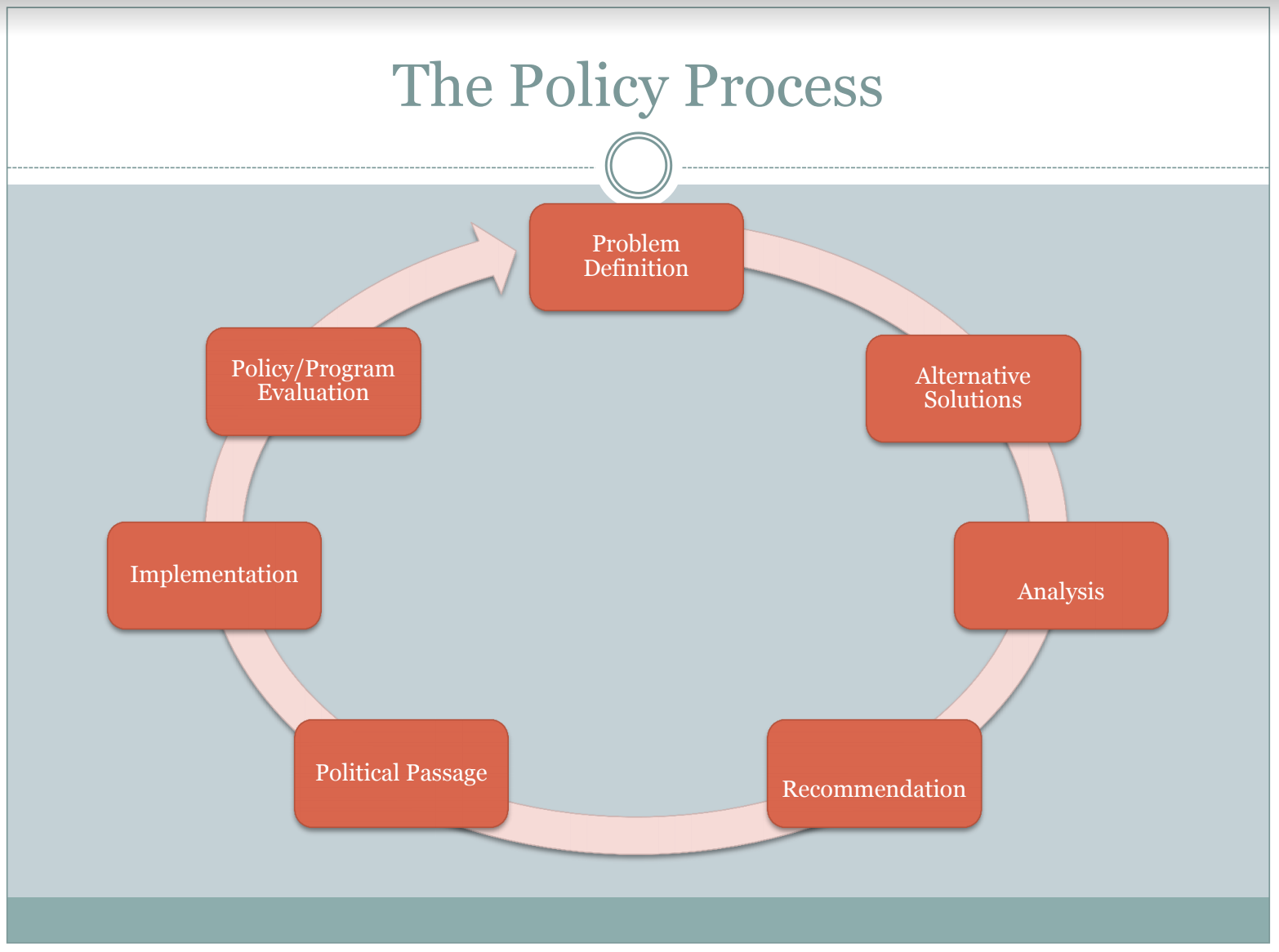Policy analysis. Policy implementation. Policy evaluation. These are phrases we hear thrown around a lot, sometimes sloppily, and sometimes making us feel like there is no coherent connection between these different concepts.
Policymaking in a democratic society is inherently sloppy. Decision-making processes are distributed and a coherent, “logical” system does not necessarily describe how policy is created and crafted over time. That being said, we can still use a model to make sense of these concepts from a design perspective.
One model I particularly like is the “policy wheel.” This model characterizes policy development as an iterative process that starts with problem definition then moves on to analysis, implementation, evaluation, and then back to the start again with a new iteration of problem definition. The diagram below is a slide I was exposed to in a class during my introduction to policy analysis course in graduate school taught by Mia Bird, an assistant adjunct professor at UC Berkeley’s Goldman School of Public Policy. I still use it today.
In this model, the steps of “problem definition” to “recommendation” all comprise policy analysis as characterized in Eugene Bardach’s A Practical Guide for Policy Analysis: The Eightfold Path to More Effective Problem Solving.
A rational policymaking process starts with problem definition: understanding what problem demands the need for the public sector to act. It then moves through the steps of construction of alternatives, analysis of these alternatives to see what their impacts would be, then recommendation to policymakers informed by this analytical process.
These four steps are the domain of the policy analyst. The step of “political passage,” however, is the domain of the policymaker. While political feasibility is a classic criteria of policy analysis, analysts rarely have a better understanding of political reality than policymakers themselves. It is in this step that policymakers contend with the competing interests of a democracy and craft a policy with at least some information provided by the previous policy analytic steps.
Next comes implementation. This is the step in the hands of the administrators and program staff. Implementation is the “doing” of policy, and is a step in the policy process all on its own. A number of different policy decisions are being made every moment that impact the outcome of the program, but this is the part of the policy process people are most closely exposed to: the people who process your tax forms, serve you at the DMV, pull you over for speeding. Decisions made at the policy analysis and policy passage stages impact the effectiveness of implementation and implementation is an animal in itself, with decisions being made every day that impact the effectiveness of the policy.
The final step in the policy wheel is evaluation. This is the domain of the program evaluator: the professional with the unenviable task of answering the question “does this work?” The evaluator collects data from the implementation process and uses it to determine if the policy is having the desired effects. This information is extremely valuable as the process begins again, this time incorporating these lessons learned.
I find this model an extremely helpful way to understand how policy analysis, politics, implementation, and evaluation work together to make better policy. Yes, it is a model, so it is imperfect, but it gives us an idea of what the policymaking process looks like at its best. I hope you will find this model as helpful as I have.


